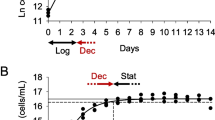Abstract
The effects of immersion salinity on the food properties [water content, salinity, and free amino acid (FAA) content] of shucked oysters were analyzed. Results of a laboratory immersion experiment suggested that the molluscous parts (other than the adductor muscle) swelled in lower salinity and shrank in higher salinity. Higher FAA content was observed in oysters immersed in higher-salinity water. In the adductor muscle, water content increased and FAA content decreased markedly following immersion, regardless of salinity, probably because of intake of immersion fluid and leakage of FAAs across the cut end of the adductor muscle. Immersion salinity ranged from 0.17 to 1.54 % in shucked oyster products on the retail market. Tissue salinity was strongly correlated with immersion salinity (r = 0.904), and tissue water content was correlated negatively with immersion salinity (r = −0.668). In addition, total FAA and taurine content of oysters were correlated with immersion salinity (r = 0.629 and 0.865, respectively). These results clearly indicate that immersion salinity is an important factor affecting the food components of shucked oysters.






Similar content being viewed by others
References
Tanimoto S, Aoyama Y, Okazaki T (2004) Changes in ATP and its related compounds and organic acid in oyster soaked in salt water at 3 °C (In Japanese with English abstract). Bull Hiroshima Prefect Food Technol Res Cent 23:9–14
Park BH, Park MS, Kim BY, Hur SB, Kim SJ (1988) Culture of the Pacific oyster (Crassostrea gigas) in the Republic of Korea. FAO, Rome
Tsunoda K, Inoue N, Aoyama M, Ito H, Tachibana M (1985) Studies on the freshness of fishes and shellfishes. I. Simple colorimetry of dehydrogenase activity in oyster using tetrazolium chloride (In Japanese with English abstract). Food Hyg Soc Jpn 26:229–233
Sugawara Y, Masuyama E, Fujii T, Kusano T (1994) A spectroscopic method for evaluating freshness of shucked oysters during cold storage. J Home Econ Jpn 45:549–553
Somero GN, Bowlus RD (1983) Osmolyte and metabolic end products of molluscs: the design of compatible solute systems. In: Hochachka PW (ed) Mollusca, vol 2. Academic Press, New York, pp 77–100
Hosoi M, Kubota S, Toyohara M, Toyohara H, Hayashi I (2003) Effect of salinity change on free amino acid content in Pacific oyster. Fish Sci 69:395–400
Yokoyama Y, Sakaguchi M, Kawai F, Kanamori M (1992) Changes in concentration of ATP-related compounds in various tissues of oyster during ice storage. Nippon Suisan Gakkaishi 58:2125–2136
Murata M, Sakaguchi M (1986) Changes in contents of free amino acid, trimethylamine, nonprotein nitrogen of oyster during ice storage. Nippon Suisan Gakkaishi 52:1975–1980
Sakaguchi M, Murata M (1989) Seasonal variations of free amino acids in oyster whole body and adductor muscle. Nippon Suisan Gakkaishi 55:2037–2041
Yoneda C, Kasamatsu C, Murakami T, Kasai M, Hatae K (2012) Seasonal variation in the chemical constituents of Pacific oyster cultured by the single seed method in Akkeshi. Hokkaido J Cookery Sci Jpn 45:339–345
Author information
Authors and Affiliations
Corresponding author
Rights and permissions
About this article
Cite this article
Hosoi, M., Sugihara, S., Kato, K. et al. Effects of immersion salinity on the food properties of shucked oysters. Fish Sci 80, 819–825 (2014). https://doi.org/10.1007/s12562-014-0746-6
Received:
Accepted:
Published:
Issue Date:
DOI: https://doi.org/10.1007/s12562-014-0746-6




